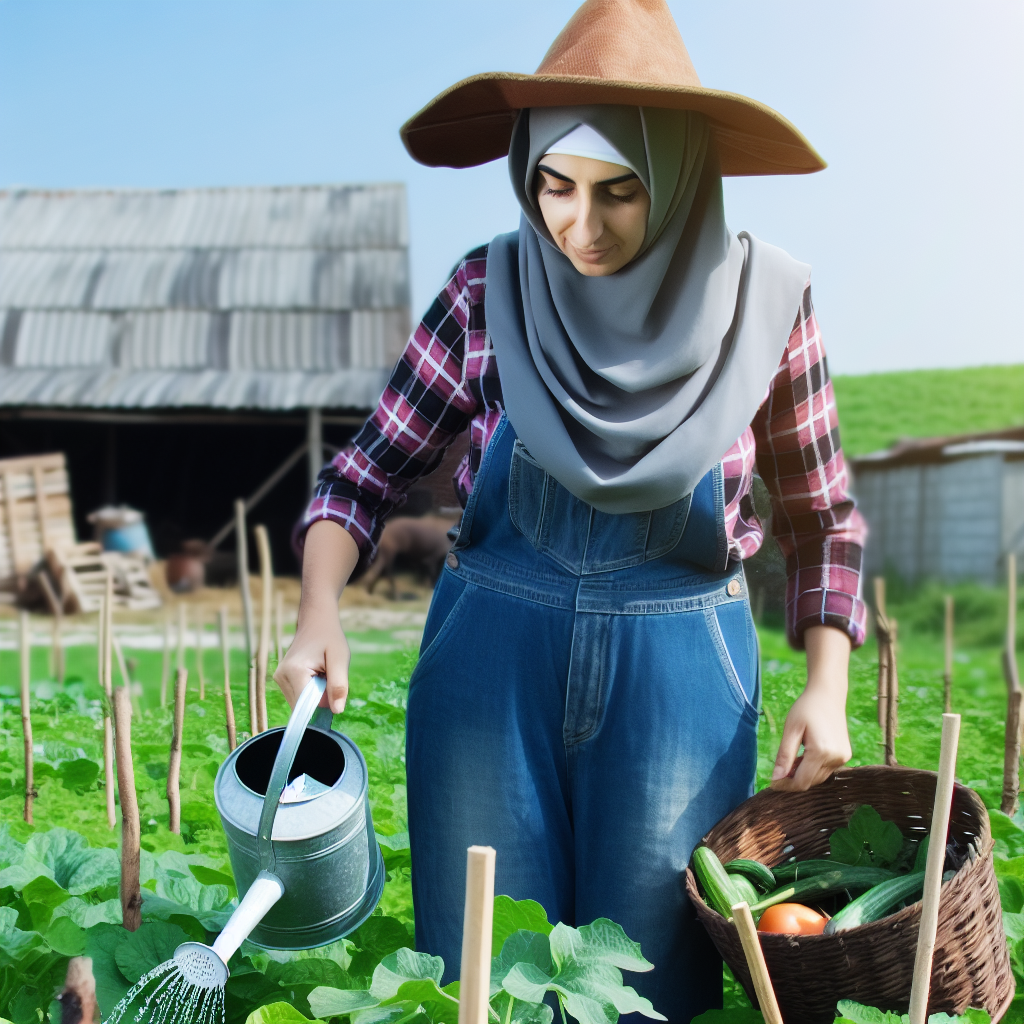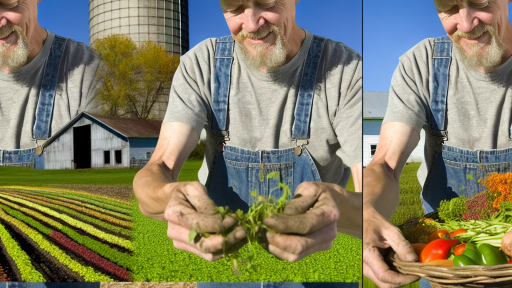Understanding Small-Scale Farming
Principles of Small-Scale Farming
Small-scale farming emphasizes sustainable practices.
It focuses on reducing environmental impact.
Additionally, it promotes local food production.
Benefits of Small-Scale Farming
This approach enhances food security within communities.
It encourages biodiversity and soil health.
Moreover, it provides economic opportunities for smallholders.
Community and Social Impact
Small-scale farms foster stronger community ties.
They encourage collective decision-making and shared resources.
Furthermore, these farms often support local markets.
Starting Your Own Small-Scale Farm
Begin by assessing your land and resources.
Consider what crops or livestock suit your environment.
Moreover, research local agricultural practices.
Engage with local farmers for insights and guidance.
Long-Term Goals and Sustainability
Set realistic goals for your small-scale farm.
Plan for crop rotation and soil maintenance.
Transform Your Agribusiness
Unlock your farm's potential with expert advice tailored to your needs. Get actionable steps that drive real results.
Get StartedAdditionally, focus on water conservation techniques.
Stay informed about sustainable farming methods.
Choosing the Right Location
Soil Considerations
The foundation of any successful small-scale farm starts with soil quality.
Healthy soil promotes robust plant growth and can support diverse crops.
Start by testing your soil for nutrients and pH levels.
Look for soil that is rich in organic matter and well-draining.
Consider using compost to enhance your soil structure over time.
Climate Considerations
Your local climate plays a significant role in farming success.
Research the growing season duration for your area.
Make sure your crops align with the climate conditions.
Assess temperature extremes and rainfall patterns as well.
Choosing heat-resistant plants can help in warmer climates.
Environmental Considerations
Pay attention to the surrounding environment.
Check for nearby water sources which can support irrigation.
Evaluate the potential for pest and disease infestation in the area.
Using natural barriers can reduce exposure to pests.
Finally, consider local wildlife and how they may impact your crops.
Access and Infrastructure
Accessibility is crucial for successful farming operations.
Ensure roads provide easy access for transporting crops and supplies.
Access to resources like water, tools, and markets enhances productivity.
Evaluate local zoning laws that may affect your farming activities.
Access to electricity can also be important for equipment operation.
Essential Tools and Equipment for Beginners
Basic Hand Tools
Every beginner needs a set of basic hand tools.
These tools include a shovel, rake, and hoe.
Showcase Your Farming Business
Publish your professional farming services profile on our blog for a one-time fee of $200 and reach a dedicated audience of farmers and agribusiness owners.
Publish Your ProfileAdditionally, pruning shears are essential for maintaining plants.
Using quality tools makes gardening easier and more enjoyable.
Power Tools
Power tools can greatly enhance efficiency on the farm.
A tiller helps prepare the soil effectively.
Moreover, a weed trimmer assists in keeping the garden tidy.
Investing in reliable power tools saves time and effort.
Irrigation Equipment
Irrigation is crucial for plant health.
Beginner farmers should use drip irrigation systems.
These systems deliver water directly to the roots.
Furthermore, soaker hoses are also a popular option.
They provide thorough soil moisture without wasting water.
Planting Supplies
Good planting supplies are important for successful farming.
Seed trays and pots help in starting seeds indoors.
Additionally, biodegradable pots prevent transplant shock.
Labels keep track of various plant types and varieties.
Soil Testing Kits
Soil testing kits provide essential information about soil health.
They measure pH levels and nutrient content.
Understanding soil composition helps in making informed decisions.
Optimal soil conditions lead to robust plant growth.
Protective Gear
Safety should always come first on the farm.
Wear gloves to protect your hands from injuries and chemicals.
Additionally, sturdy boots provide support and safety.
Don’t forget to use a wide-brimmed hat for sun protection.
Storage Solutions
Efficient storage keeps tools organized and accessible.
Shed or barn space is vital for equipment storage.
Moreover, shelving units help to organize smaller tools and supplies.
Effective storage solutions save time when working in the field.
You Might Also Like: Integrating Agri-Tourism into Your Farm Business
Crop Selection: How to Choose the Best Crops for Your Small-Scale Farm
Understanding Your Climate
Your local climate greatly affects crop selection.
Start by assessing average temperatures throughout the year.
Also, consider rainfall patterns and seasonal variations.
Crops thrive in climates they are adapted to.
SoiI Quality Evaluation
Conduct a soil test to determine its nutrient composition.
Check for pH levels and organic matter content.
Healthy soil significantly impacts crop yields.
Adjust your crop choices according to soil quality.
Choosing Crops for Your Market
Identify which crops are in demand in your local market.
Research trends and preferences among consumers.
Popular crops can provide better financial returns.
Consider growing specialty crops to attract niche markets.
Showcase Your Farming Business
Publish your professional farming services profile on our blog for a one-time fee of $200 and reach a dedicated audience of farmers and agribusiness owners.
Publish Your ProfileDiversity and Crop Rotation
Growing diverse crops enhances your farm’s resilience.
Implementing crop rotation can prevent soil depletion.
Additionally, it reduces pest and disease outbreaks.
Rotate crops based on their nutrient needs and growth cycles.
Start with Easy-to-Grow Crops
As a beginner, opt for crops that are easy to cultivate.
Consider starting with vegetables like tomatoes and peppers.
Herbs such as basil and parsley are also good options.
These crops often require less maintenance and care.
Seasonal Alignment
Choose crops that align with your growing season.
Understand planting times for cool-season and warm-season crops.
Succession planting can maximize your harvests throughout the year.
Plan accordingly for fall and spring crops.
Consulting Local Resources
Utilize local agricultural extension services for guidance.
These resources can provide insight into best practices.
Local farmers can also offer invaluable advice.
Networking can lead to better crop selection strategies.
Find Out More: Ethical Farming For Small Farms
Soil Health Management
Importance of Soil Health
Soyl health is vital for successful farming.
Healthy soil supports plant growth and improves yield.
It also fosters a diverse ecosystem in your garden.
Practices to Improve Soil Fertility
Organic matter enhances soil structure and fertility.
Add compost regularly to your garden soil.
Rotate crops to prevent nutrient depletion.
Cover crops can protect and enrich the soil during off-seasons.
Using Organic Amendments
Organic amendments provide essential nutrients.
Examples include manure, bone meal, and green manure.
These materials improve soil structure and moisture retention.
Soil Testing and Analysis
Regular soil tests identify nutrient deficiencies.
Consider using a local agricultural extension service.
This analysis guides your fertilization strategy.
Maintaining Soil Health
Practice minimal tillage to protect soil fauna.
Keep soil covered to prevent erosion and moisture loss.
Mulching with organic materials supports beneficial organisms.
Utilizing Earthworms and Microorganisms
Encourage earthworm populations for natural aeration.
Microorganisms play a crucial role in nutrient cycling.
Healthy soil life helps break down organic material effectively.
Preventing Soil Compaction
Avoid heavy machinery to reduce soil compaction.
Compacted soil restricts root growth and water infiltration.
Utilize raised beds to minimize soil pressure.
Delve into the Subject: Creating Memorable Experiences in Agri-Tourism
Showcase Your Farming Business
Publish your professional farming services profile on our blog for a one-time fee of $200 and reach a dedicated audience of farmers and agribusiness owners.
Publish Your Profile
Water Management Strategies: Efficient Irrigation Techniques
Importance of Efficient Irrigation
Efficient irrigation conserves water resources effectively.
It also enhances crop yields significantly.
Moreover, it reduces the cost associated with water usage.
Types of Irrigation Techniques
Various irrigation techniques exist for small-scale farming.
Drip irrigation delivers water directly to plant roots.
This method minimizes water wastage and evaporation.
On the other hand, sprinkler systems distribute water evenly over fields.
Both methods are efficient and practical for beginners.
Drip Irrigation
Drip irrigation systems use tubes with emitters.
These emitters release water slowly and consistently.
This technique is ideal for vegetable gardens and orchards.
Setting up a drip system requires initial investment.
However, the long-term water savings are substantial.
Sprinkler Irrigation
Sprinkler systems imitate natural rainfall.
They use pumps to create pressure and spray water.
Sprinklers are particularly useful for larger areas.
They can cover uneven terrains and various crop types.
Rainwater Harvesting
Rainwater harvesting is an excellent strategy for irrigation.
This technique collects rainwater from roofs and surfaces.
Farmers can store this water for dry periods.
It helps reduce reliance on municipal water supplies.
Soil Moisture Management
Maintaining soil moisture is crucial for plant health.
Utilizing mulch retains moisture in the soil.
Additionally, monitoring soil moisture prevents over-irrigation.
Soil sensors can provide real-time data for better management.
Implementing Efficient Irrigation Techniques
Implementing efficient irrigation techniques enhances small-scale farming.
Farmers should evaluate their specific needs and conditions.
Choosing the right method can lead to environmentally friendly farming.
Sustainable practices will benefit both crops and the ecosystem.
Gain More Insights: Organic Farming Tips for Community Supported Agriculture
Pest and Disease Control
Introduction to Integrated Pest Management
Integrated Pest Management (IPM) offers a strategic approach to pest control.
This method focuses on sustainable practices that help minimize pest problems.
Moreover, it combines various techniques for effective management.
Understanding Pests and Their Impact
Pests can significantly affect crop health and yield.
Identifying common pests is crucial for effective control.
A few typical pests include aphids, spider mites, and caterpillars.
Preventive measures help reduce the likelihood of infestations.
Monitoring and Identification
Regular monitoring of your crops is essential.
Check for any signs of pests or diseases frequently.
Use traps or visual inspections to assess pest populations.
Showcase Your Farming Business
Publish your professional farming services profile on our blog for a one-time fee of $200 and reach a dedicated audience of farmers and agribusiness owners.
Publish Your ProfileIdentifying pests accurately will guide control methods.
Cultural Controls
Cultural practices play a vital role in pest management.
Crop rotation helps prevent pest establishment.
Additionally, proper sanitation reduces pest habitat.
Planting resistant varieties can also decrease susceptibility.
Biological Controls
Biological control utilizes natural enemies to manage pests.
Encouraging beneficial insects like ladybugs can help.
Moreover, introducing parasites can naturally reduce pest populations.
Mechanical and Physical Controls
Mechanical methods include traps and barriers.
Physical barriers protect crops from insects and pests effectively.
For instance, row covers can shield young plants.
Chemical Controls
When necessary, consider using chemical controls carefully.
Opt for low-toxicity options to minimize environmental impact.
Always follow the label instructions for safe application.
Evaluation and Adjustment
Regularly evaluate the effectiveness of your pest management strategies.
Adjust your approaches based on the results observed.
This flexibility is crucial for successful pest control.
Crop Rotation and Diversity: Enhancing Productivity and Reducing Risks
Understanding Crop Rotation
Crop rotation involves changing the type of crop grown in a specific area over time.
This practice helps improve soil health and fertility.
By rotating crops, you can disrupt pest and weed cycles.
Additionally, different crops contribute varying nutrients to the soil.
For example, legumes can fix nitrogen in the soil for future crops.
Benefits of Crop Rotation
Crop rotation enhances the overall productivity of your farm.
It reduces the need for chemical fertilizers and pesticides.
This approach minimizes the risk of soil degradation.
Furthermore, crop rotation can increase biodiversity in your farm ecosystem.
Healthy soil leads to healthier plants, which can yield higher produce.
Implementing Crop Diversity
Integrating diverse crops in your farming practices promotes resilience.
Diverse crops can share resources more efficiently than monocultures.
This strategy helps in preventing disease outbreaks.
Moreover, it allows farmers to adapt to changing market demands.
Consider planting a mix of fruits, vegetables, and grains.
Planning Your Crop Rotation
Start by mapping out the layout of your farm.
Choose crops suitable for your climate and soil type.
Next, create a rotation schedule that accounts for seasons.
Be sure to include rest periods for soil regeneration.
Finally, keep track of your results for continuous improvement.
Examples of Crop Rotation Systems
- Three-course system: Aligning grains, legumes, and root vegetables.
- Four-course system: Adding a cover crop or a fallow year.
- Seasonal rotation: Rotating crops every season for optimum use.
Challenges of Crop Rotation
Crop rotation may require more planning and organization.
Farmers must educate themselves on the needs of various crops.
Adapting to this method may also involve some trial and error.
Showcase Your Farming Business
Publish your professional farming services profile on our blog for a one-time fee of $200 and reach a dedicated audience of farmers and agribusiness owners.
Publish Your ProfileHowever, the long-term benefits greatly outweigh initial challenges.
Resilience against pests and diseases is a significant advantage.
Additional Resources
Campesino a Campesino: Voices from Latin America’s Farmer to …




